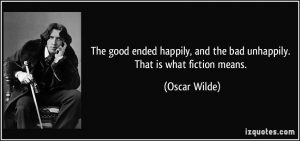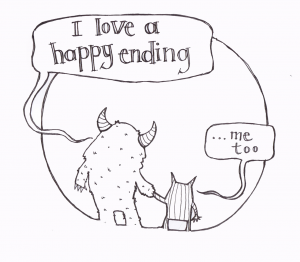I have already lost count, dear readers, of how many emails I’ve received from publishers, from Amazon, from various other bookish outlets to which I subscribe, all touting romance novels for Valentine’s Day. And we still have a week to go (or only a week, I suppose, if Valentine’s Day is your thing…)! We all know that I really love my romance novels, and we here at the Free For All are always ready to support any reader who would like to explore and enjoy romance novels, as well. But the overwhelming focus on the genre this week got me thinking about love stories….And the fact that they are everywhere.
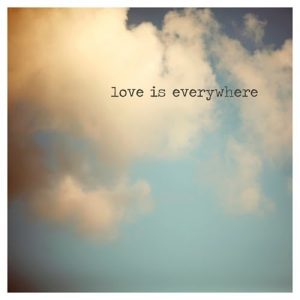
Romance novels deal very specifically in the act of falling in love; in the realization that love makes life worth living. But they are by no means the only genre that focuses on love. In fiction, especially, love often defines the stakes of a plot, whether it be a mystery, a science fiction adventure, or a horror novel.
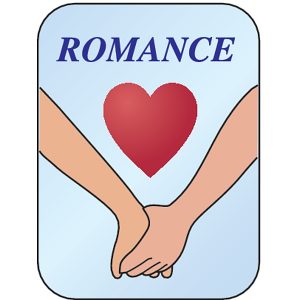 Love gives a story its high stakes, no matter what that story is. The only reason Benjamin Mears goes after Barlow in ‘Salem’s Lot is because of his love for Susan Norton. Hamlet, considered by many to be the greatest drama ever written, pivots on any number of love stories. Heck, even Richard Kadrey’s Coop Heists, which are officially among the weirdest (and most sublime) books I’ve ever read, feature Coop and his girl Giselle, and that bond is a foundational aspect of this series, and a critical part of Coop’s own development as a character.
Love gives a story its high stakes, no matter what that story is. The only reason Benjamin Mears goes after Barlow in ‘Salem’s Lot is because of his love for Susan Norton. Hamlet, considered by many to be the greatest drama ever written, pivots on any number of love stories. Heck, even Richard Kadrey’s Coop Heists, which are officially among the weirdest (and most sublime) books I’ve ever read, feature Coop and his girl Giselle, and that bond is a foundational aspect of this series, and a critical part of Coop’s own development as a character.
And that doesn’t even touch on the other kinds of love stories that can be found in literature. Whether its a love of cooking or creating to the love we have for our pets, to the love we have for our sports teams, love defines us, gives us purpose, and sets the stakes for whatever journey we’re on.
So let’s not pretend that love is a thing that only lives in romances, or that love stories aren’t critically important aspects of the stories that we read and tell. In fact, since we’re on the subject, let’s look at a few books that definitely don’t feature “romance” stickers on them…

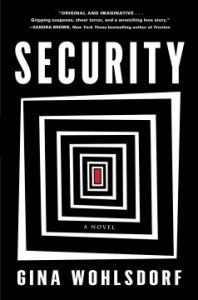 Security: One of the most haunting, unsettling, fascinating books I’ve read in a very long time, Gina Wohlsdorf’s debut is also a story about love–the things we are distances we go, the chances we take, and the pain we suffer for it. Though it’s a violent, scary, and super-twisted book about a covert attack on a new building that is billed as the ‘world’s most secure hotel’, it’s the love stories that are revealed in the course of the book that make you care whether anyone survives. Don’t read this book in the dark, but read it. I promise you’ll be surprised, and even a little charmed–even if it’s in spite of yourself.
Security: One of the most haunting, unsettling, fascinating books I’ve read in a very long time, Gina Wohlsdorf’s debut is also a story about love–the things we are distances we go, the chances we take, and the pain we suffer for it. Though it’s a violent, scary, and super-twisted book about a covert attack on a new building that is billed as the ‘world’s most secure hotel’, it’s the love stories that are revealed in the course of the book that make you care whether anyone survives. Don’t read this book in the dark, but read it. I promise you’ll be surprised, and even a little charmed–even if it’s in spite of yourself.
 The Kenzie and Gennaro Series: I have read this series, set in the Dorchester of the 1990’s, multiple times. Dennis Lehane is an absolute master at creating a scene, and sketching characters that are as familiar as your own neighbors. His plots are clever and twisty and raise detective fiction to something close to classic literature. But what I always take away from these books is the love between Patrick Kenzie and his partner, Angie Gennaro. I won’t spoil anything for you by telling you how their story unfolds; read these books for their neo-noir atmosphere; read them for their bitterly prescient discussions of race, class, and power; read them for the thrill of recognizing your home in someone else’s books…but read these books for these two characters, too. Their journey, together and separately, are what makes these books the classics they are.
The Kenzie and Gennaro Series: I have read this series, set in the Dorchester of the 1990’s, multiple times. Dennis Lehane is an absolute master at creating a scene, and sketching characters that are as familiar as your own neighbors. His plots are clever and twisty and raise detective fiction to something close to classic literature. But what I always take away from these books is the love between Patrick Kenzie and his partner, Angie Gennaro. I won’t spoil anything for you by telling you how their story unfolds; read these books for their neo-noir atmosphere; read them for their bitterly prescient discussions of race, class, and power; read them for the thrill of recognizing your home in someone else’s books…but read these books for these two characters, too. Their journey, together and separately, are what makes these books the classics they are.
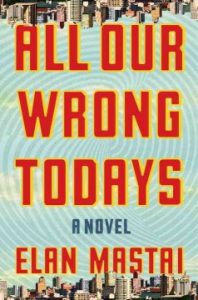 All Our Wrong Todays: This book is on it’s way to us right now, and is a pitch-perfect blend of science fiction and love story. Elan Mastai’s debut focuses on Tom Barron a young man who lives in an alternate, idyllic 2016, where there is no war, no fear, and technological developments aplenty. But Tom makes a mistake. A critical, stupid mistake that brings him into our screwed up, messy, angry world. But when he’s provided with a chance to return to the world he knew, he begins to realize what I’ve been saying this whole time…that it’s not the things we have, but the people who make our futures worth exploring. That we are defined by love–all kinds of love. We are made human by love. And that love can make any journey worthwhile.
All Our Wrong Todays: This book is on it’s way to us right now, and is a pitch-perfect blend of science fiction and love story. Elan Mastai’s debut focuses on Tom Barron a young man who lives in an alternate, idyllic 2016, where there is no war, no fear, and technological developments aplenty. But Tom makes a mistake. A critical, stupid mistake that brings him into our screwed up, messy, angry world. But when he’s provided with a chance to return to the world he knew, he begins to realize what I’ve been saying this whole time…that it’s not the things we have, but the people who make our futures worth exploring. That we are defined by love–all kinds of love. We are made human by love. And that love can make any journey worthwhile.


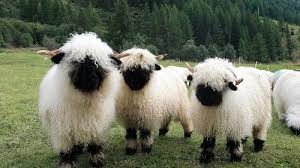
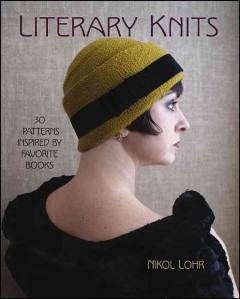 Literary Knits
Literary Knits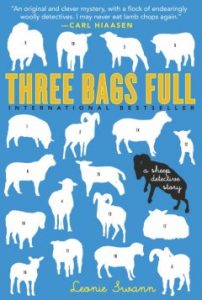
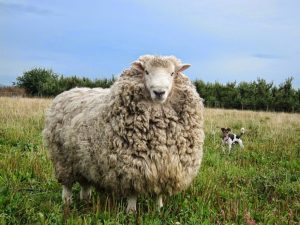 revealing the murderer is particularly clever). Their eventual reward is absolutely priceless, as well, making this mystery a sheer delight. Plus, there is a merino sheep (see right) named “Mopple the Whale”, which may be my favorite name in the history of literature.
revealing the murderer is particularly clever). Their eventual reward is absolutely priceless, as well, making this mystery a sheer delight. Plus, there is a merino sheep (see right) named “Mopple the Whale”, which may be my favorite name in the history of literature.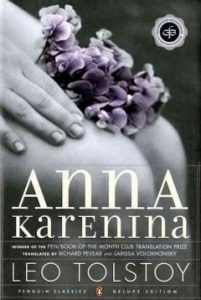 Anna Karenina
Anna Karenina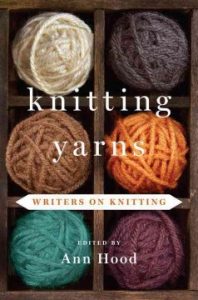 Kntting Yarns: Writers on Knitting
Kntting Yarns: Writers on Knitting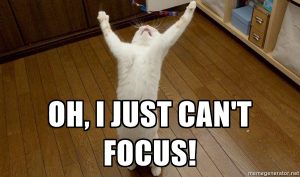
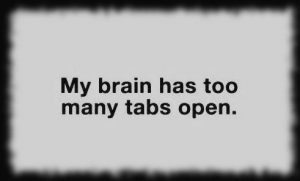 Firstly, I was blown away by the honesty of that question. Because there are plenty of times when even I, who turn to books to help me through any of life’s moments, simply can’t read. The reasons are myriad: colds and headaches make focus really tricky; so does lack of sleep and a busy schedule; being in school, sometimes I’ve just read too much in a day to focus on another plot, another paragraph, another syllable. But that doesn’t mean I don’t want literature in my life–often, it’s the best way to make all the other nonsense fade away and to ground me.
Firstly, I was blown away by the honesty of that question. Because there are plenty of times when even I, who turn to books to help me through any of life’s moments, simply can’t read. The reasons are myriad: colds and headaches make focus really tricky; so does lack of sleep and a busy schedule; being in school, sometimes I’ve just read too much in a day to focus on another plot, another paragraph, another syllable. But that doesn’t mean I don’t want literature in my life–often, it’s the best way to make all the other nonsense fade away and to ground me.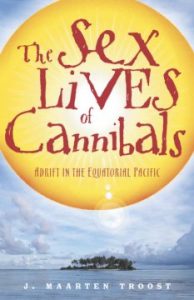 Probably the first and more frequent recommendation was for short stories–everything from
Probably the first and more frequent recommendation was for short stories–everything from 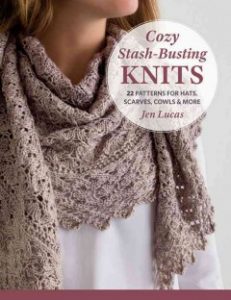 Another suggestion was cartoons and picture books.
Another suggestion was cartoons and picture books. 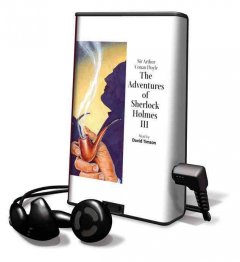 Another avenue of exploration that was suggested was audiobooks. These stunning little bits of technology leave your hands free to knit or clean or drive, while still pouring a story into your brain. For many people who aren’t visual learners, or who don’t have extra hands or the time to stop and read a printed book, audiobooks can be an ideal way to discover new stories and adventures. Best of all, these come in short versions, too! P.G. Wodehouse’s phenomenal
Another avenue of exploration that was suggested was audiobooks. These stunning little bits of technology leave your hands free to knit or clean or drive, while still pouring a story into your brain. For many people who aren’t visual learners, or who don’t have extra hands or the time to stop and read a printed book, audiobooks can be an ideal way to discover new stories and adventures. Best of all, these come in short versions, too! P.G. Wodehouse’s phenomenal 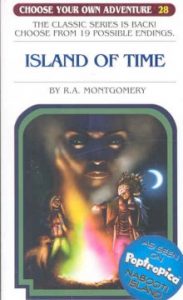 In the interest of full disclosure, I also added the
In the interest of full disclosure, I also added the  Now, as I’ve said before: I realize that romance is a genre built on fantasy and wish-fulfillment. I no more expect verisimilitude from my romances than I think James Bond is a real guy, or that we can build dinosaurs from the DNA found in mosquitoes. As I’ve said previously, romance novels are a space where we get to talk about issues of gender, and where we can support the healthy expression of desire and the individual quest for a happy ending. They created a space where the social norms could be transgressed, and where women were given the space, the time, and the support, to discover what it was they wanted, and to go for it. More and more today, we see the inclusion and recognition LGBTQ community, as well. Non-heterosexual romances are becoming more and more prevalent, and I, for one could not be happier.
Now, as I’ve said before: I realize that romance is a genre built on fantasy and wish-fulfillment. I no more expect verisimilitude from my romances than I think James Bond is a real guy, or that we can build dinosaurs from the DNA found in mosquitoes. As I’ve said previously, romance novels are a space where we get to talk about issues of gender, and where we can support the healthy expression of desire and the individual quest for a happy ending. They created a space where the social norms could be transgressed, and where women were given the space, the time, and the support, to discover what it was they wanted, and to go for it. More and more today, we see the inclusion and recognition LGBTQ community, as well. Non-heterosexual romances are becoming more and more prevalent, and I, for one could not be happier.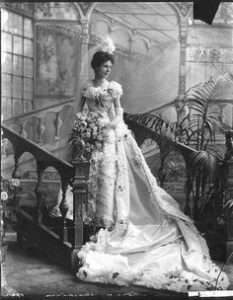 This is a very, very old problem in literature, specifically in American literature, than can be traced back to the myths and realties the 19th century (and earlier, to be honest), which we can discuss at length later. But, to be brief, there are two assumptions at play here: first is the Victorian (classist) assumption that marriage was only for white (wealthy) people. Therefore, a love story that doesn’t involve white people (and usually financially secure white people) becomes
This is a very, very old problem in literature, specifically in American literature, than can be traced back to the myths and realties the 19th century (and earlier, to be honest), which we can discuss at length later. But, to be brief, there are two assumptions at play here: first is the Victorian (classist) assumption that marriage was only for white (wealthy) people. Therefore, a love story that doesn’t involve white people (and usually financially secure white people) becomes 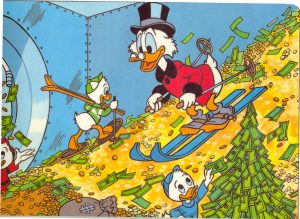
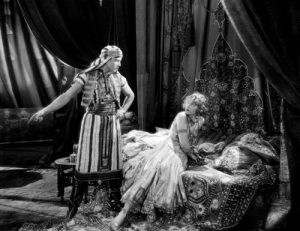
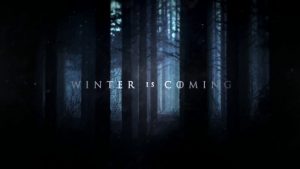
 Dark Matter
Dark Matter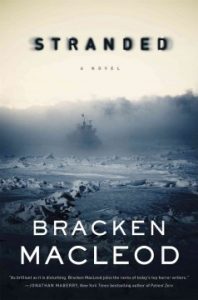
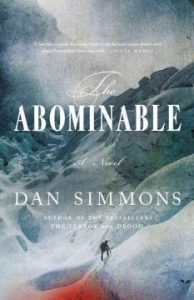 The Abominable
The Abominable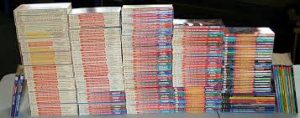
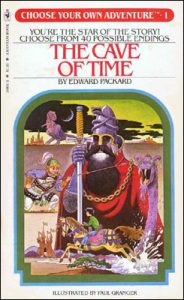 Originally published by Bantam Books, the Choose Your Own Adventure books (henceforth to be abbreviated CYOA, ok?) were one of the most popular children’s book series of the 1980’s and 1990’s,selling more than 250 million copies between 1979 and 1998. The series was based upon a concept created by Edward Packard and originally published by Vermont Crossroads Press until the control of Constance Cappel’s and R. A. Montgomery, before being bought by Bantam. They were originally written for readers between the ages of 7-14, and all featured a second-person narration, referring at all times to what you are doing, feeling, seeing, etc. In this way, readers are immediately involved in the books and whatever high-stakes, quick-paced adventure that opened in the book’s first few pages. Soon, however, you, the character, find yourself faced with a decision (see the page below); sometimes it is which path to take on a journey, or with which character to initially a conversation. Depending on your choice, you would flip to a designated page, seeing the outcome of your decision.
Originally published by Bantam Books, the Choose Your Own Adventure books (henceforth to be abbreviated CYOA, ok?) were one of the most popular children’s book series of the 1980’s and 1990’s,selling more than 250 million copies between 1979 and 1998. The series was based upon a concept created by Edward Packard and originally published by Vermont Crossroads Press until the control of Constance Cappel’s and R. A. Montgomery, before being bought by Bantam. They were originally written for readers between the ages of 7-14, and all featured a second-person narration, referring at all times to what you are doing, feeling, seeing, etc. In this way, readers are immediately involved in the books and whatever high-stakes, quick-paced adventure that opened in the book’s first few pages. Soon, however, you, the character, find yourself faced with a decision (see the page below); sometimes it is which path to take on a journey, or with which character to initially a conversation. Depending on your choice, you would flip to a designated page, seeing the outcome of your decision.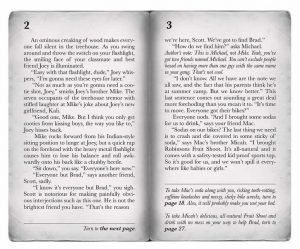
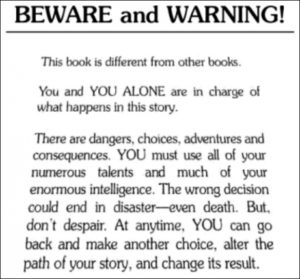 When I was a kid, I
When I was a kid, I 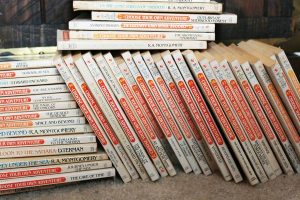
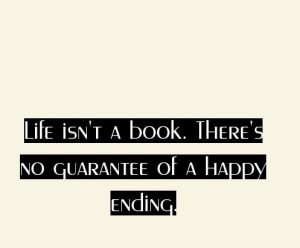
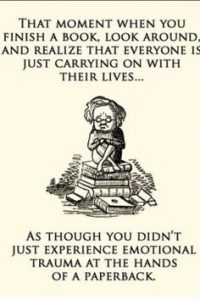
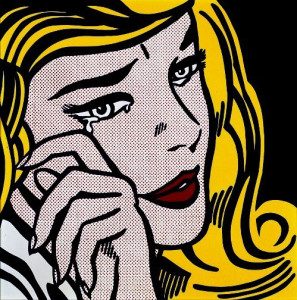 I, however, almost always hate crying. Crying makes me angry. As does bad news, sudden surprises, and loss. And when bad things happen to characters for whom I care greatly, I get just as angry on their behalf as I would if those things happened to me. Thus, I realized long ago that books that mirrored life were probably not, overall, beneficial to my health. And I proudly, and loudly, began looking for books with happy endings. Books where characters survived and grew and were rewarded for doing so. Books where people could be redeemed and the devil could be bested and the fires could be put out and there was still magic left in the world. I know these things don’t happen in real life. That is why these books are fiction. But there is a huge amount of power in creating–and insisting on–happy endings. They are a source of defiant hope in a world that seems to be getting cynical. They are a little bit of light in an otherwise dark day. They are a reassurance that if it could happen to these characters, it could happen to you.
I, however, almost always hate crying. Crying makes me angry. As does bad news, sudden surprises, and loss. And when bad things happen to characters for whom I care greatly, I get just as angry on their behalf as I would if those things happened to me. Thus, I realized long ago that books that mirrored life were probably not, overall, beneficial to my health. And I proudly, and loudly, began looking for books with happy endings. Books where characters survived and grew and were rewarded for doing so. Books where people could be redeemed and the devil could be bested and the fires could be put out and there was still magic left in the world. I know these things don’t happen in real life. That is why these books are fiction. But there is a huge amount of power in creating–and insisting on–happy endings. They are a source of defiant hope in a world that seems to be getting cynical. They are a little bit of light in an otherwise dark day. They are a reassurance that if it could happen to these characters, it could happen to you.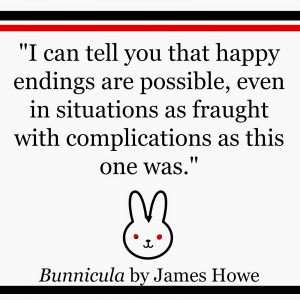 Now, I realize that we are not all going to agree on what a “happy ending” is….which is a prime example of why
Now, I realize that we are not all going to agree on what a “happy ending” is….which is a prime example of why